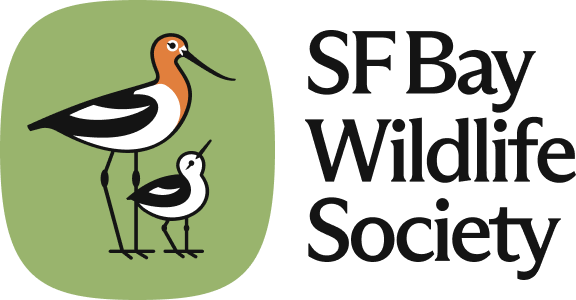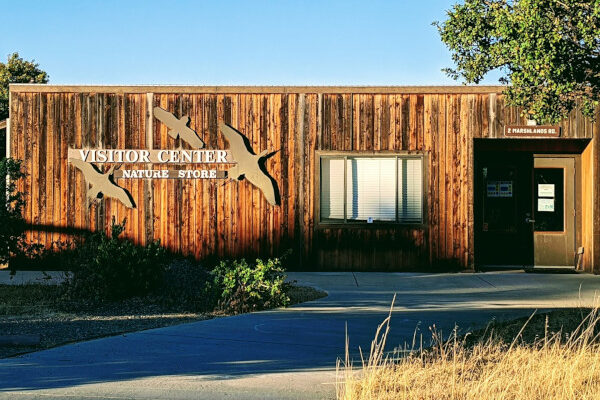By Ceal Craig, Eric McKee, Debra King, and Sue Ten Eyck
What began 25 years ago as a small not-for-profit organization formed primarily to publish a quarterly newsletter, has blossomed into a cooperating association and friends group that helps finance environmental education, facility construction, and habitat restoration. John Steiner, former San Francisco Bay NWR Complex Chief Naturalist who was instrumental in launching the San Francisco Bay Wildlife Society, wrote in a 1997 Tideline article that the Society was create“to help fund the refuge’s expanded public use effort… A public-benefit, nonprofit organization chartered by the State of California in 1987, the Society has spent its first ten years providing vital support to the many refuge programs.”
The Society owes its success over the years to a number of volunteers, who mapped out the organization’s future course and made success possible. Oakland attorney Jed Somit volunteered his time to draw up the initial charter documents and provided the guidance that got the organization started. He served as a volunteer Director for many years.
Dr. Chris Kitting, Biology Professor at California State University East Bay, has continuously San Francisco Bay Wildlife Society Celebrates 25 years of Environmental Education & Refuge Complex Support supported the Society, often serving as an officer, and is still on the Board of Directors today.
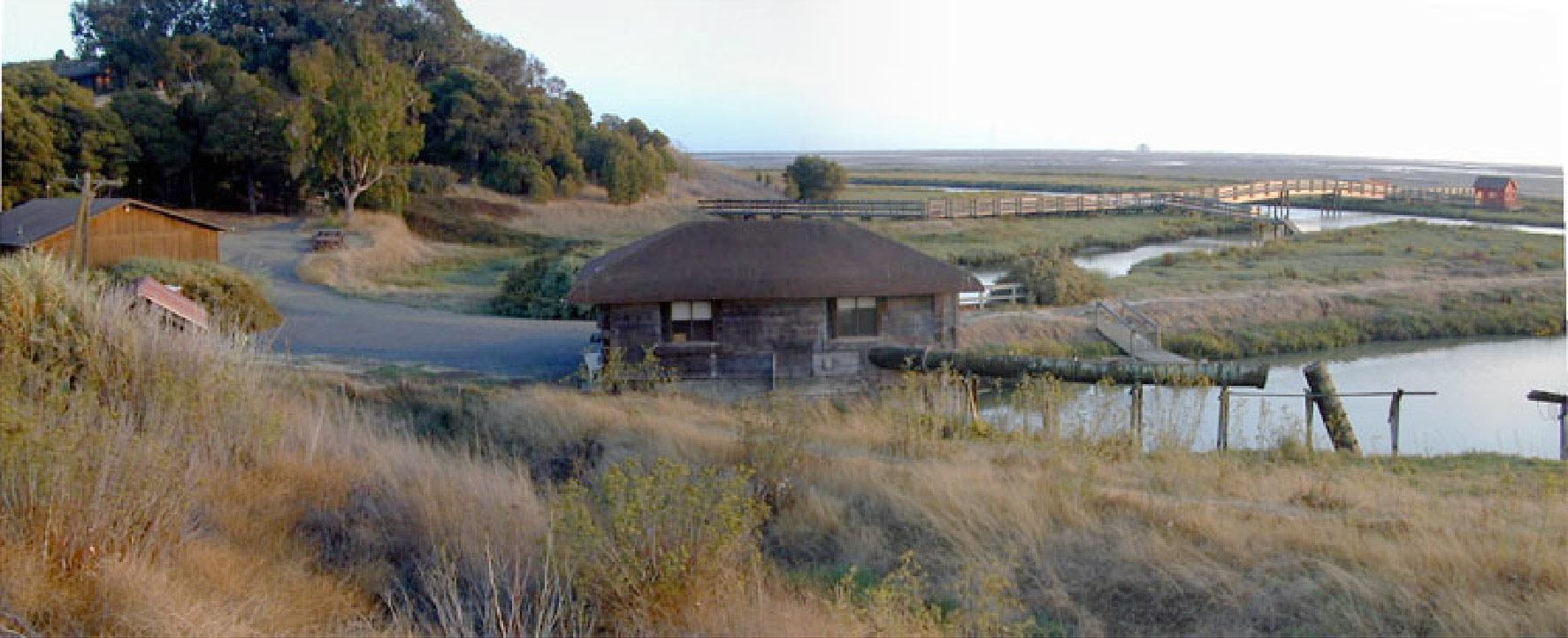
Pump house that had been renovated into an environmental education classroom. Photo by Dr. Chris Kitting
The first goals of the Society were to generate revenue through bookstore sales at the refuge, publish Tideline, brochures, trail guides and other publications, and fund environmental education programs. Over the next quarter century these goals expanded and grew to meet the growing needs of the refuge. The Society’s mission, since the first day, has been to promote public awareness and appreciation of the San Francisco Bay and its natural history, and to foster the conservation and preservation of the remaining bay lands as essential wildlife habitat.
In its first decade of existence, the Society wanted to help other National Wildlife Refuges in the western region. Bookstores on those refuges were established to better support their specific projects. The board members wanted to offer their assistance, just as Coastal Parks Association at Point Reyes National Seashore had done when the Society was getting its start. Other projects the Society undertook included creating a native plant nursery, establishing a wetlands research station with Cal State East Bay, renovating an abandoned pump house into an environmental education classroom and stocking it with laboratory equipment through a grant from Leslie Salt, and managing funds from the Peninsula Open Space Trust for the Bair Island restoration project. Research conducted at the Research Station has resulted in a number of scientific publications on wetlands ecology.
Since then, the Society has helped foster diverse field work at the refuge by tens of thousands of students of all ages, from elementary to graduate classes, and the general public. The Society has supported scientific and policy conferences (such as Society of Wetland Scientists) and printed diverse publications that include children’s books, a history of Drawbridge, scientific journal articles, and early editions of the Salt Marsh Manual. The Salt Marsh Manual was developed as a guide for teachers bringing their students to the refuge for a field trip, and contained activities that can be done inside the classroom. This guide is still being used as a model for National Wildlife Refuges across the country today.
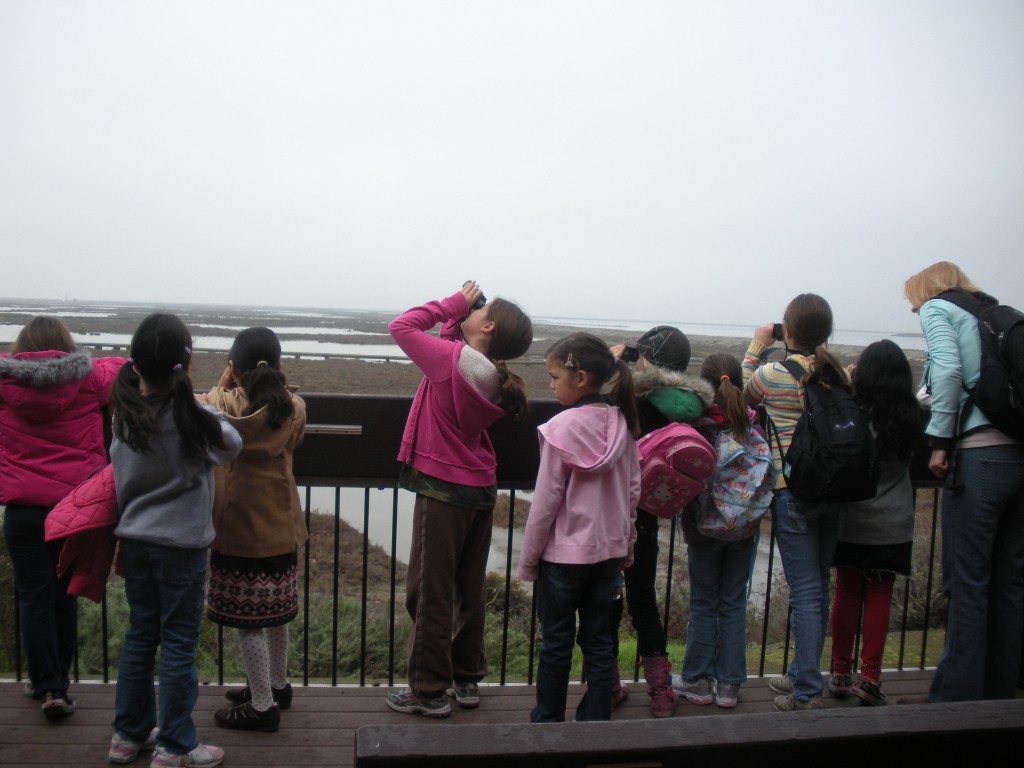
Brownie Eco-Explorers learn about habitats, food chains, and how they can help wildlife at the Environmental Education Center, Alviso, CA.
As visitation began to increase at the Environmental Education Center in Alviso, there was a need for the center to be open on weekends. A long-term partnership with the City of San Jose and with the Santa Clara Valley Urban Runoff Pollution Prevention Program (SCVURPPP) provided staff for weekend support beginning in 1992 to supplement refuge employees. These two new staff members not only deliver specific programs in water conservation, they also assist with refuge operations and messages; these partnerships continue today. The addition of the Slow the Flow Coordinator (City of San Jose) and an interpretive specialist (SCVURPPP) greatly increased the number and variety of interpretive programs offered at the Don Edward Refuge. Chances are, if you’ve attended a program or an event at the Environmental Education Center, it was made possible through these partnerships between the Society and the City of San Jose and SCVURPPP.
The Society began its second decade of service and partnership with the addition of construction projects and habitat restoration. A capital campaign was waged for a new boardwalk that is now part of the New Chicago Marsh Trail at the Environmental Education Center. Funding was sought to construct a new greenhouse and improve the Tidelands Trail in Fremont for accessibility. The Society also branched out into the realm of restoration during this time, helping to fund the Bair Island Restoration and Management Plan, restoration work at Antioch Dunes NWR, and uplands restoration at the Environmental Education Center.
Over the next years, environmental education expanded with summer camps for young people in Fremont, Alviso, and East Palo Alto. The Slow the Flow and Watershed Watchers (formerly known as SCVURPPP) programs expanded their outreach with continued investments in environmental education equipment and interpretive displays, kiosks, and trails. These two programs have consistently brought rave reviews from the public.
“Slow the Flow is a perfect match – and extension – to the BioSITE program. The rich discussions generated by the Slow the Flow program and demonstrations help students to make connections in a very concrete and visual way.”
The Slow the Flow program has grown exponentially since it first began offering field trips, interpretive programs, events, and classroom presentations to participants in 1999. In its infancy, the program consisted of one dedicated staff person who worked part-time. That person served as the Program Coordinator, providing environmental education through four different programs, one special event, one summer day-camp, and a handful of classroom presentations and field trips. Today, the program has grown to include 15 unique interpretive programs, two to three special events a year, one summer camp, and field trips and classroom presentations for schools, community partners, and nonprofit organizations.
On average, Slow the Flow provides outreach and education experiences for over 5,000 students, visitors, and volunteers, and to over 25 schools, colleges, and non-profit organizations annually!
Yearly, the Slow the Flow program has enhanced its outreach. In 2005, Slow the Flow partnered with the NASA Ames JASON Expedition to provide wetlands education for over 5,750 participants and then enhanced programs in 2006 by including a pre- and post-classroom visit with a field trip, to participating schools. This has become the foundation for a large part of the existing program and its assessment efforts. Recently, in partnership with ScienceCastle.com, two interactive programs were developed and webcast live over the internet, providing a new and innovative way for participants to become involved in the program.
The Watershed Watchers program is a fruitful, collaborative partnership for the Santa Clara Valley Urban Runoff Pollution Prevention Program, the U.S. Fish and Wildlife Service, and the San Francisco Bay Wildlife Society. What began as weekend staffing for the Don Edwards Refuge Environmental Education Center site in Alviso, has turned into a full collection of great educational and interpretive programs.
The purpose of the Watershed Watchers program is to prevent urban runoff pollution (pollution coming from a myriad of sources, such as oils from vehicles, detergents from washing things outside, litter, and pet waste) and increase the surrounding communities’ knowledge of such pollution, and how to reduce its harmful effects through personal behavior. The Watershed Watchers Coordinator also arranges programs at the Environmental Education Center, such as bird watching, photography, night sky parties, owl programs, and bacteria programs, giving visitors an introduction to local wildlife and how wildlife is directly affected by human actions.
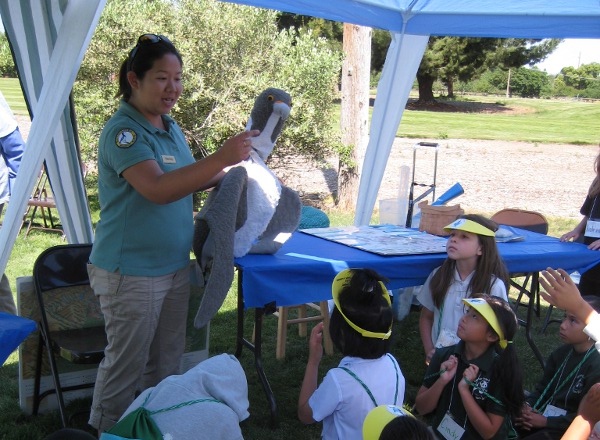
Third grade students learn about pollution prevention from the Watershed Watchers Coordinator at the Water Wizard Festival, held annually at the Guadalupe River Park & Gardens, San Jose, CA.
Outreach is also an important component for Watershed Watchers spreading the message of pollution prevention, with visits to local libraries, sciences fairs, and other environmental organizations. Community service projects allow participants to really make a difference, removing invasive plants, learning about native plant gardening, and eliminating the use of pesticides and other chemicals.
The Society’s staff, the refuge staff, and many volunteers coordinate several large scale events such as South Bay Bird Fest, Shark Day, and Spooky Slough. These events often attract hundreds of visitors, who learn about local birds, sharks, and nocturnal wildlife. Activities are geared toward teaching people about the impacts to local wildlife. California Coastal Cleanup Day and National River Cleanup Day get local communities involved in stewardship and are opportunities to help spread the message of preventing urban runoff pollution.
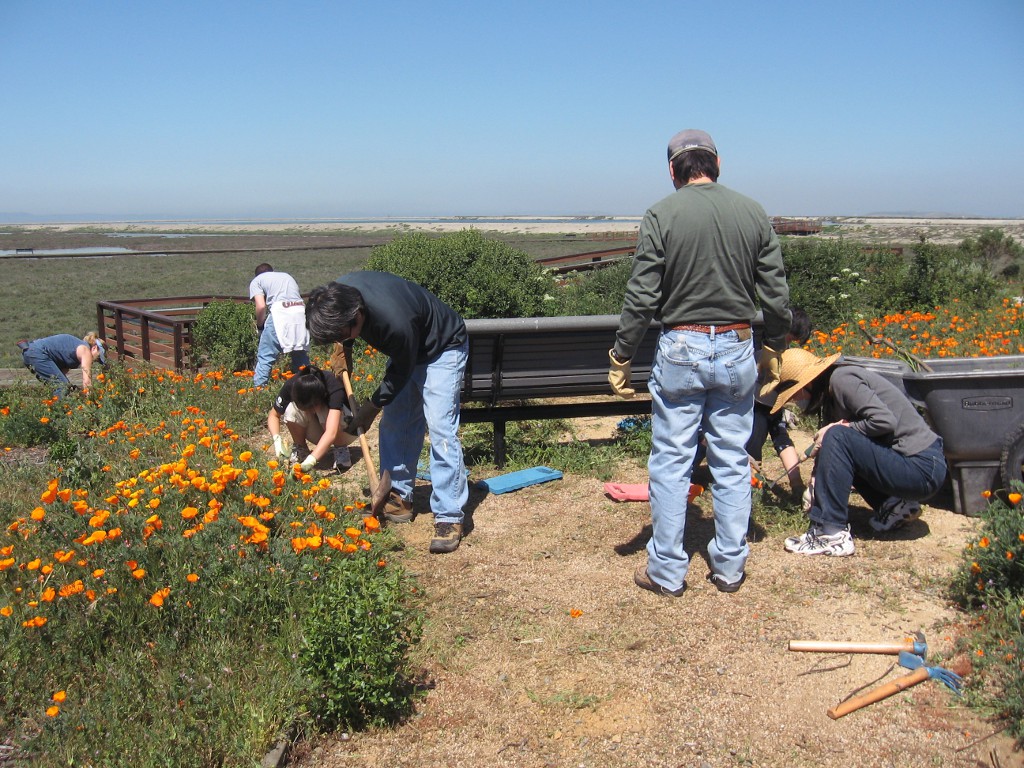
Volunteers get dirty and have fun at the annual Earth Day Cleanup at Ravenswood Point in East Palo Alto, CA.
Now in its third decade, the San Francisco Bay Wildlife Society looks forward to continuing its partnership with the San Francisco Bay National Wildlife Refuge Complex, the City of San Jose, and the Santa Clara Valley Urban Runoff Prevention Pollution Program. We will continue to explore alternative approaches and investments to supplement the refuge’s work in these hard fiscal times. We welcome your support and input to maintain and expand the efforts of the San Francisco Bay National Wildlife Refuge Complex and its friend and collaborative organization: the San Francisco Bay Wildlife Society. Together, we can achieve the goals of conserving and preserving the San Francisco baylands for another 25 years and beyond. To learn more about the San Francisco Bay Wildlife Society, or to become a supporting member, go to www.sfbws.com.
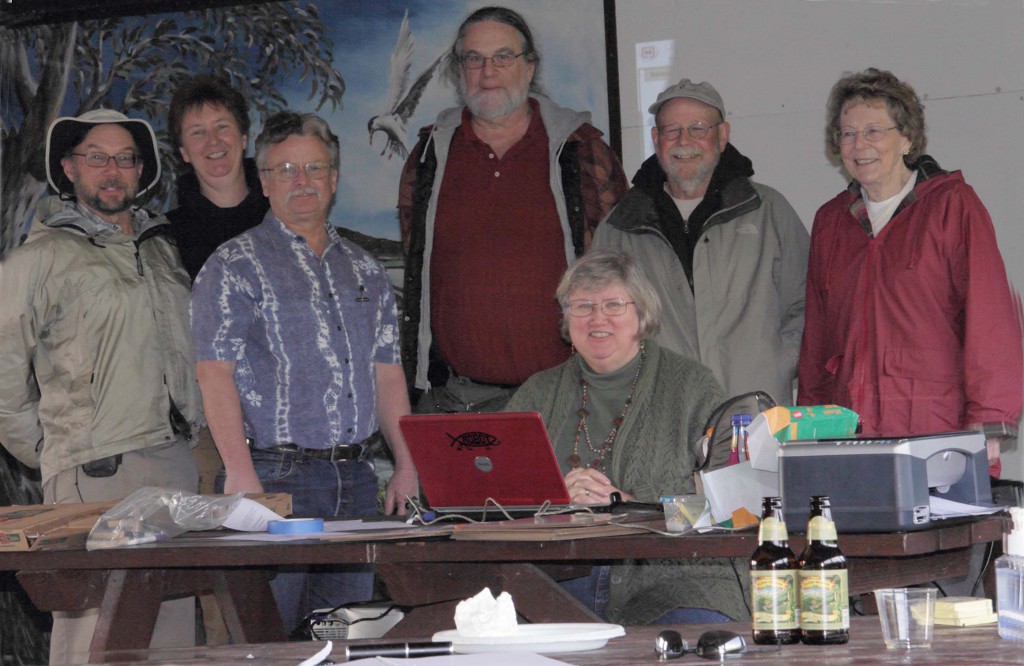
Current Board of Directors (left to right): Dr. Chris Kitting, Cheryl Davis, Terry Smith, Varon Smith, Ceal Craig, John Bradley (FWS), Sue TenEyck. (Missing: David Riensche, Karen Maxwell, Bart Anderson.)
Cecilia (Ceal) D. Craig is the President of the San Francisco Bay Wildlife Society Board of Directors. Ceal began volunteering at the refuge, in the late 1990s. She joined the San Francisco Bay Wildlife Society Board of Directors in 2005, serving later as Secretary and now President. Ceal worked many years in high tech, after earning a Bachelor of Science in Mechanical Engineering from The Ohio State University and a Master of Science in Engineering from Cal State University at Fullerton. She is currently pursuing a Ph.D. in Education at Walden University, studying her other passion, robotics programs for high school students to grow their interest in engineering and science.
Eric McKee is the Environmental Education Specialist/Slow the Flow Program Coordinator. Eric grew up in rural Connecticut, and achieved a Bachelor of Science in Natural Resource Management from the State University of New York – College of Environmental Science and Forestry in Syracuse, NY. Eric also holds certifications as a Project WET Facilitator, Leave No Trace Master Educator, and Certified Interpretive Guide from the National Association for Interpretation.
Debra King is the Interpretive Specialist/ Watershed Watchers Program Coordinator. She is a California native who studied Environmental Sciences and Music at UC Berkeley, and enjoys spending her time outdoors, traveling, cooking, and playing with animals.
Sue TenEyck is the San Francisco Bay Wildlife Society Program Administrator and a member of the Society Board of Directors. Sue has been a volunteer at the refuge for more than 15 years and became a board member in 1990.


